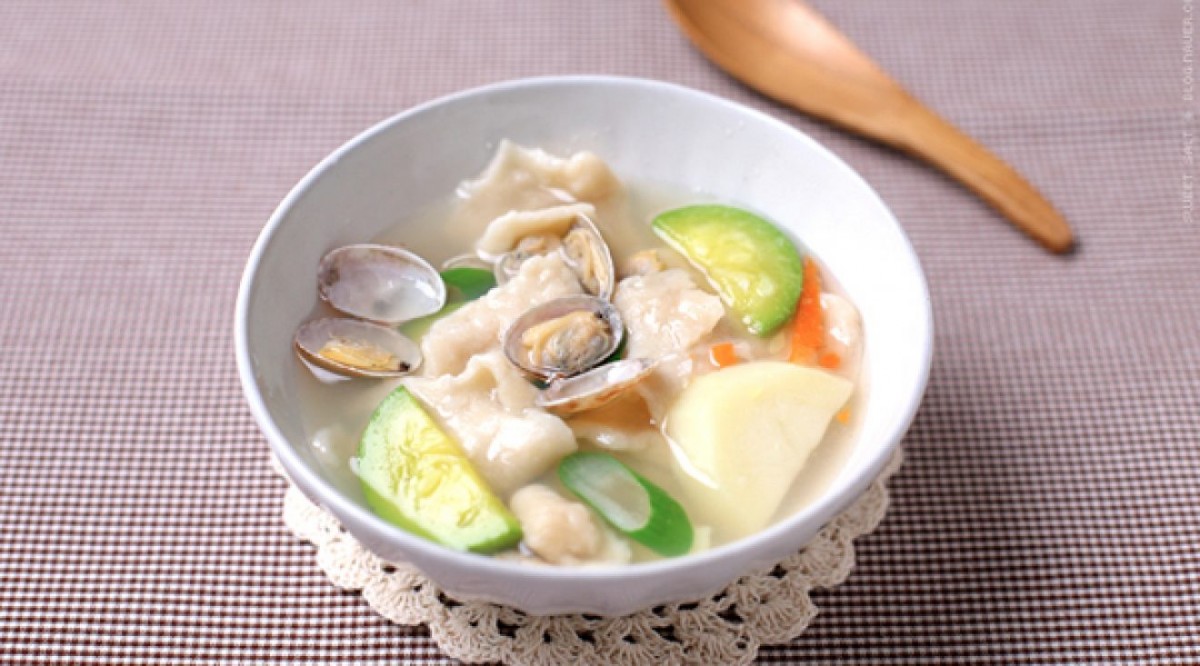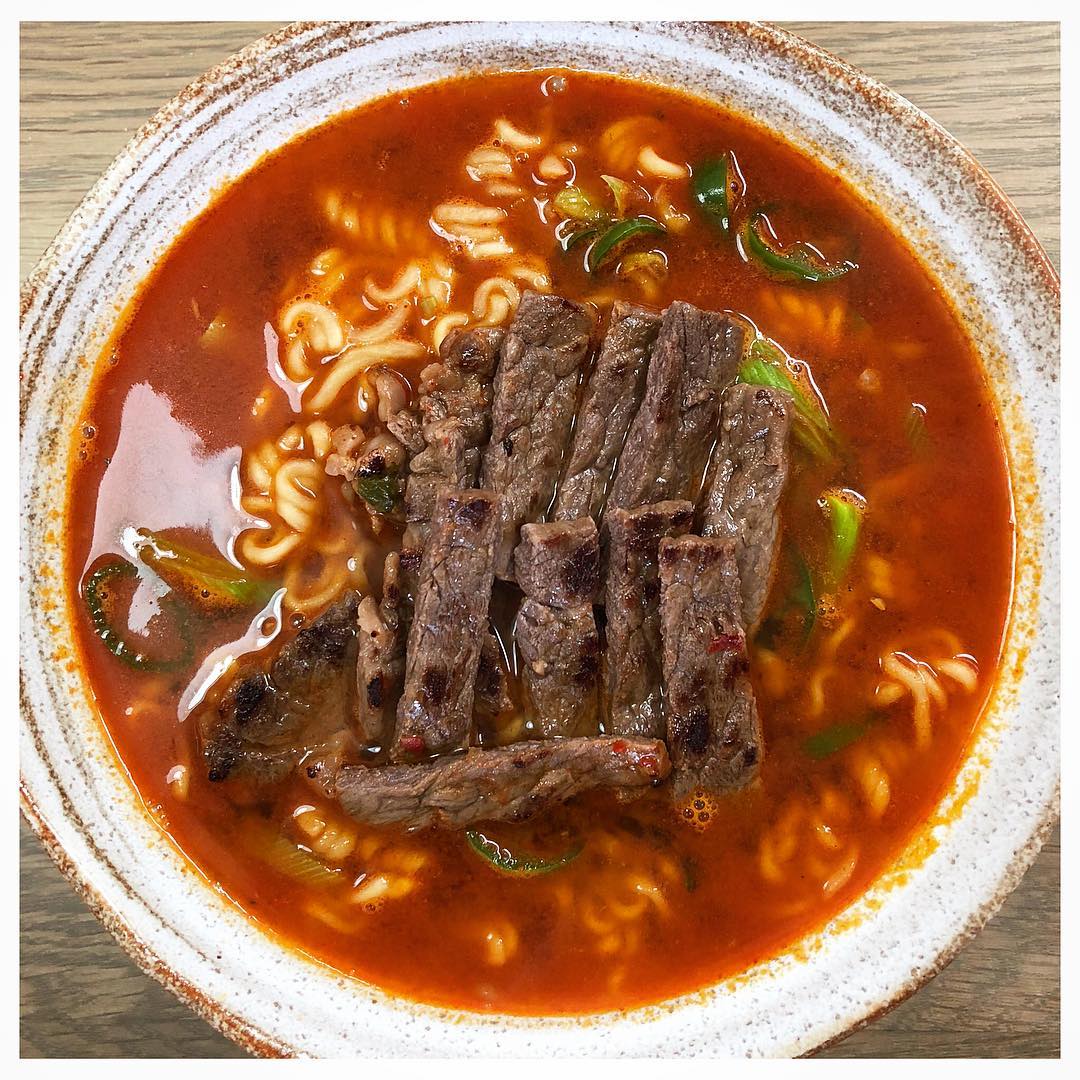On a sleepless night,
The metallic sound of a small, silver enamel pot wakes the serenity
In a sizzling broth with brisket, mushrooms, and chopped scallions,
The twisted strands of ramen noodle start to unravel
And through the kitchen a spicy fragrance travel
If I could only dissolve the agony and troubles of life in the broth,
I wouldn’t need spicy flavoring powder
Sip, slurp, and swallow,
It is spicy and burn like a flame
As I put down the empty bowl,
Gone with the noodles are my agony and troubles,
And the broth keeps me warm on cold night
What piece did you choose to imitate? I chose to imitate ’Noodles in Broth’ by Hong Junju.
Why did you choose this piece? I chose this piece because I really liked the visual imagery of the making of bing steeped in tea. This poem provokes image of my mom cooking Sujebi, a Korean hand-pulled dough soup. “He kneaded the dough to the right consistency” — this reminds me of when my mom would give me a bowl of flour dough in an aluminum bowl asking me to knead thoroughly. She would take the poorly-kneaded dough from me, and with just few deft movements, reached the right consistency. “A smile would come to the lips, the body would relax” — this touches upon the therapeutic effect one gains from drinking broth. In my poem, I tried to imitate the healing sensation I gain from drinking hot broth of ramen. On a sleepless night, I cook spicy instant ramen with extra toppings of brisket, mushrooms, and chopped scallions; the rich broth makes me forget about the agony and troubles of daily life and comforts me.

What did you learn about the culture of the original author through imitating his or her style? The poem provokes homely and warm feelings; as common as broth is in a lot of different cultures, the warm feeling one gains from enjoying a hot broth dish seems to be universal. By reading On the Noodle Road: From Beijing to Rome, with Love and Pasta, I was able to discover three things about the culture of the original author. First, Chinese cultivated wheat widely in the northern China around the sixth century, “and invented a specific word for noodles, mian.” Second, officials “wrote of how noodles in broth were eaten during summer festivals and were thought to ward off email spells.” Lastly, “noodles became a part of everyday and ceremonial life.” The author’s culture considers noodle as an essential part of daily life; similarly in my culture, there are numerous noodle dishes served with cold and hot broth; these dishes are considered an integral part of the Korean culinary culture.
What did you learn about the your own culture while writing? I chose to write a poem about Shin Ramen; whenever I have a bad day, I would make Shin Ramen and reward myself with the simple pleasure of enjoying a simple and delicious noodle dish with hot broth. Shin Ramen and the Korean history go hand in hand; during the 1960s, instant ramen replaced rice for the purpose of overcoming food shortage in Korea, which was torn by the Korean War. Despite the initial rejection, instant ramen soon emerged as a popular downmarket food and is considered a part of Korean everyday life to this day.
Is there cultural DNA embedded in the piece you read and in your piece? How does this DNA manifest in the texts? As professor Ristaino mentioned in class, dry pasta for her is much more than a mere dish for her. It provokes so many memories associated with the dish. For me, Shin Ramen brings me memories of my friends and family — whether it be circling around a small table with my classmates on a rainy day after a soccer practice, or during a 2AM mission on a naval ship, my memories associated with Shin Ramen is deeply associated with the Korean cultural DNA. Whether on a good day or a bad day, the memories associated with the dish console me, and as I empty a bowl, my agony and troubles are emptied as well.

